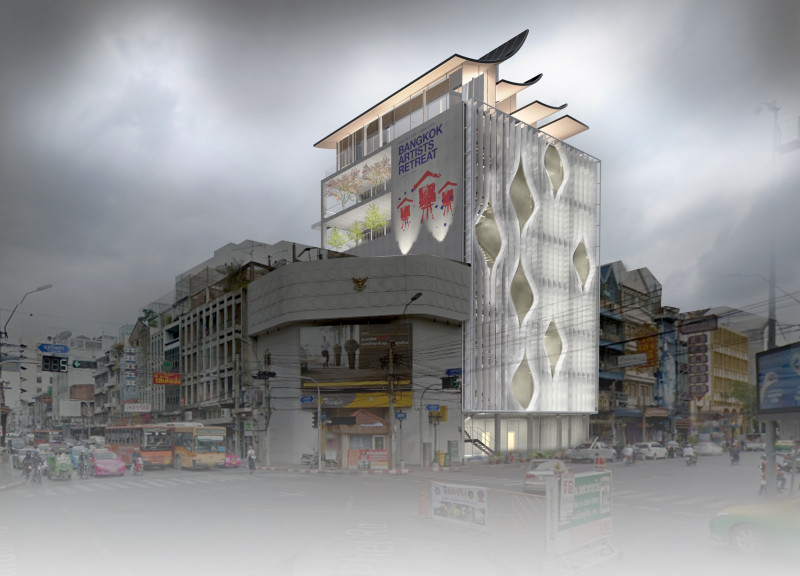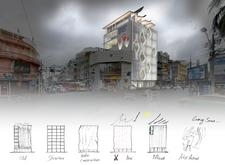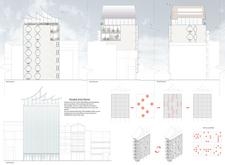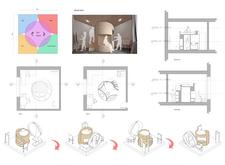5 key facts about this project
At the core of the project is the concept of revitalization, which extends not only to the physical structure itself but also to the local artistic community. By transforming an existing building into a multifunctional retreat, the project emphasizes sustainability and adaptability, recognizing the inherent value of maintaining historical context while responding to contemporary artistic needs. This approach represents a significant shift in how architectural spaces can be occupied and utilized, suggesting a model for future projects aimed at cultural engagement.
The functions of the Bangkok Artist Retreat are thoughtfully integrated to support the diverse activities of artists and the public. The facility includes artist studios, exhibition spaces, communal areas for workshops, and administrative offices. This mixed-use design is strategically intended to promote synergy among various stakeholders, encouraging collaboration between artists and visitors. By facilitating interactions, the project aims to create a dynamic environment where creativity can thrive.
One of the most notable aspects of the architecture is its emphasis on natural light and transparency. The extensive use of glass in the façade invites the outside world into the interior, fostering a sense of openness and accessibility. This design choice not only connects the retreat to its urban surroundings but also embodies the transparency and fluidity of the artistic process. The interplay of light within the spaces enhances the atmosphere, inspiring both artists and visitors.
The material palette is carefully selected to support the overall vision of sustainability and contemporary aesthetics. Reinforced concrete serves as the primary structural element, ensuring durability while allowing for expansive open spaces within. The incorporation of timber cladding introduces a layer of warmth and texture, making the environment more inviting. Steel frames are employed to support the unique architectural features, with careful consideration given to how these materials work together to create visually appealing and structurally sound forms.
Unique design approaches have been employed throughout the retreat, which set it apart from conventional artistic spaces. The building features a dynamic façade with patterned elements that change with the light and weather, reflecting the ever-evolving nature of art itself. Modular artist units within the retreat allow for flexible configurations, enabling artists to tailor their environments according to their specific needs and practices. This adaptability is crucial for fostering innovation and experimentation in creative work.
Additional noteworthy design elements include vertical gardens, strategically positioned to enhance biodiversity and improve air quality. These green spaces not only contribute to the aesthetic quality of the building but also promote a sense of connection to nature, inviting users to engage with their surroundings on multiple levels. Given Bangkok's unique climate, these gardens serve a dual purpose by providing habitats for local flora and fauna while creating tranquil environments for reflection and inspiration.
The Bangkok Artist Retreat embodies a thoughtful integration of architecture, functionality, and community engagement. It represents a significant step forward in reimagining urban spaces as centers of creativity and collaboration. The project not only meets the practical needs of artists but also serves as a catalyst for cultural dialogue within the city.
For those interested in a deeper exploration of this innovative architectural project, reviewing the architectural plans, sections, and design elements will provide valuable insights into the planning and thought processes that shaped the Bangkok Artist Retreat. Engaging with these materials will enhance the understanding of how this project seeks to redefine artistic environments in an urban context. The careful attention to detail throughout the design makes it a noteworthy case study for those interested in contemporary architecture and its impact on community dynamics.


























